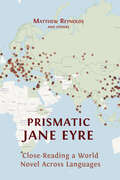- Table View
- List View
Angavikalara Hakkugala kaide 2016
by Government IndiaAngavikalara Hakkugala kaide 2016, National Center for Promotion of Employment for Disabled People
Exam Material (CBCS) First Semester B.A. - Bangalore University: ಪರೀಕ್ಷಾ ಸಾಹಿತ್ಯ (ಸಿಬಿಸಿಎಸ್) ಪ್ರಥಮ ಸೆಮಿಸ್ಟರ್ ಬಿ.ಎ. - ಬೆಂಗಳೂರು ವಿಶ್ವವಿದ್ಯಾಲಯ
by Evershine Publicationsಈ ಪುಸ್ತಕ ಎವರ್ಶೈನ್ 2019 EDITION 1ನೇ ಸೆಮಿಸ್ಟರ್ ಬಿ.ಎ. ಪ್ರಶ್ನೆಗಳ ಸಂಗ್ರಹ. ಈ ಪುಸ್ತಕದಲ್ಲಿ ಇತಿಹಾಸ,ಅರ್ಥಶಾಸ್ತ್ರ,ರಾಜ್ಯಶಾಸ್ತ್ರ,ಸಮಾಜಶಾಸ್ತ್ರ ಮತ್ತು ಪರಿಸರ ಅಧ್ಯಯನ ವಿಷಯಗಳು ಇವೆ.ಇದು ಹೊಸ ಪಠ್ಯಕ್ರಮ ಬೆಂಗಳೂರು ವಿಶ್ವವಿದ್ಯಾಲಯ ನಿಯಮಗಳನ್ನು ಅನುಸರಿಸಲಾಗುತ್ತದೆ.
2nd PUC KM Bharatada Itihasa (Karnatakada Vishesha Ullekhadondige)
by Padavi Poorva Shikshana IlakheIt is an Educational of Padavi Poorva Shikshana Ilakhe mainly for 2 nd puc students.
Pracheena Bharathada Itihaasa (Guptara kaladinda kri.sha.1206 ravarege) BA 2nd Semester: ಪ್ರಾಚೀನ ಭಾರತದ ಇತಿಹಾಸ (ಗುಪ್ತರ ಕಾಲದಿಂದ ಕ್ರಿ.ಶ. 1206 ರವರೆಗೆ) ಬಿ.ಎ. ದ್ವಿತೀಯ ಸೆಮಿಸ್ಟರ್
by Prof. B.P. Hoogaaraಇದು ಪ್ರಾಚೀನ ಭಾರತದ ಇತಿಹಾಸ ಬಿ.ಎ ಎರಡನೇ ಸೆಮಿಸ್ಟರ್ ಗುಲ್ಬರ್ಗ ಯೂನಿವರ್ಸಿಟಿ ರಾಷ್ಟ್ರೀಯ ಶಿಕ್ಷಣ ನೀತಿ ಪತ್ಯಕ್ರಮದಂತೆ ವಿದ್ಯಾರ್ಥಿಗಳಿಗೆ ಶೈಕ್ಷಣಿಕ ಪುಸ್ತಕವು ಉಪಯುಕ್ತವಾಗಿದೆ.
Prismatic Jane Eyre: Close-Reading a World Novel Across Languages
by Matthew Reynolds OthersJane Eyre, written by Charlotte Brontë and first published in 1847, has been translated more than five hundred times into over sixty languages. Prismatic Jane Eyre argues that we should see these many re-writings, not as simple replications of the novel, but as a release of its multiple interpretative possibilities: in other words, as a prism. Prismatic Jane Eyre develops the theoretical ramifications of this idea, and reads Brontë’s novel in the light of them: together, the English text and the many translations form one vast entity, a multilingual world-work, spanning many times and places, from Cuba in 1850 to 21st-century China; from Calcutta to Bologna, Argentina to Iran. Co-written by many scholars, Prismatic Jane Eyre traces the receptions of the novel across cultures, showing why, when and where it has been translated (and no less significantly, not translated – as in Swahili), and exploring its global publishing history with digital maps and carousels of cover images. Above all, the co-authors read the translations and the English text closely, and together, showing in detail how the novel’s feminist power, its political complexities and its romantic appeal play out differently in different contexts and in the varied styles and idioms of individual translators. Tracking key words such as ‘passion’ and ‘plain’ across many languages via interactive visualisations and comparative analysis, Prismatic Jane Eyre opens a wholly new perspective on Brontë’s novel, and provides a model for the collaborative close-reading of world literature. Prismatic Jane Eyre is a major intervention in translation and reception studies and world and comparative literature. It will also interest scholars of English literature, and readers of the Brontës.
Prismatic Jane Eyre: Close-Reading a World Novel Across Languages
by Matthew Reynolds OthersJane Eyre, written by Charlotte Brontë and first published in 1847, has been translated more than five hundred times into over sixty languages. Prismatic Jane Eyre argues that we should see these many re-writings, not as simple replications of the novel, but as a release of its multiple interpretative possibilities: in other words, as a prism. Prismatic Jane Eyre develops the theoretical ramifications of this idea, and reads Brontë’s novel in the light of them: together, the English text and the many translations form one vast entity, a multilingual world-work, spanning many times and places, from Cuba in 1850 to 21st-century China; from Calcutta to Bologna, Argentina to Iran. Co-written by many scholars, Prismatic Jane Eyre traces the receptions of the novel across cultures, showing why, when and where it has been translated (and no less significantly, not translated – as in Swahili), and exploring its global publishing history with digital maps and carousels of cover images. Above all, the co-authors read the translations and the English text closely, and together, showing in detail how the novel’s feminist power, its political complexities and its romantic appeal play out differently in different contexts and in the varied styles and idioms of individual translators. Tracking key words such as ‘passion’ and ‘plain’ across many languages via interactive visualisations and comparative analysis, Prismatic Jane Eyre opens a wholly new perspective on Brontë’s novel, and provides a model for the collaborative close-reading of world literature. Prismatic Jane Eyre is a major intervention in translation and reception studies and world and comparative literature. It will also interest scholars of English literature, and readers of the Brontës.
Paschathya Rajakeeya Chintane DSC-3 BA 2nd Semester
by Dr Suresh Kumar Poornima. G. Rಬೆಂಗಳೂರು ವಿಶ್ವವಿದ್ಯಾನಿಲಯದ ಹೊಸ ಶಿಕ್ಷಣ ನೀತಿಯ ಪ್ರಕಾರ ಇದು ಬಿಎ 2 ನೇ ಸೆಮ್ ವಿದ್ಯಾರ್ಥಿಗಳಿಗೆ ಶೈಕ್ಷಣಿಕ ಪುಸ್ತಕವಾಗಿದೆ

